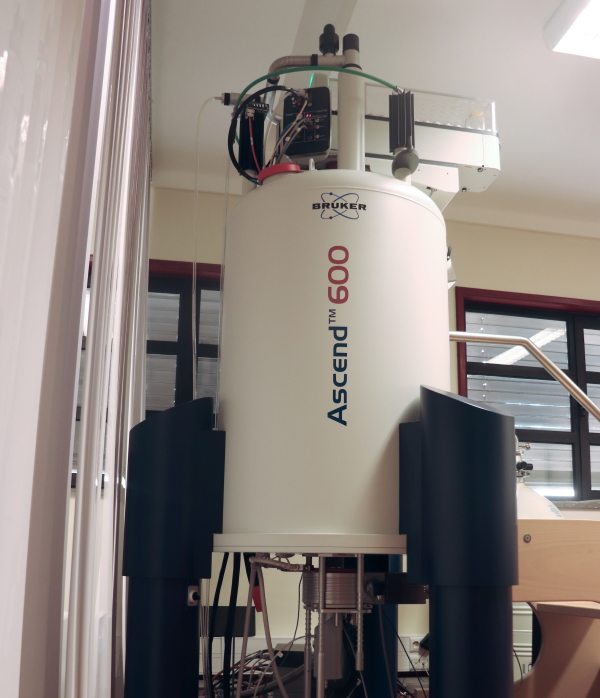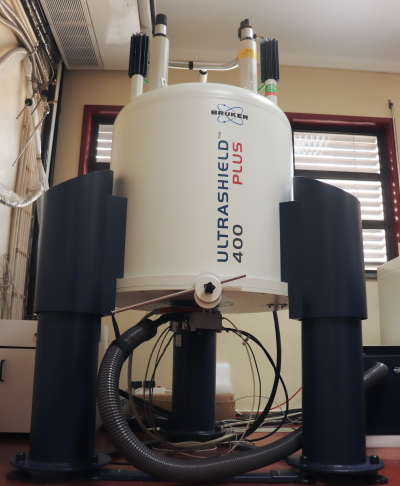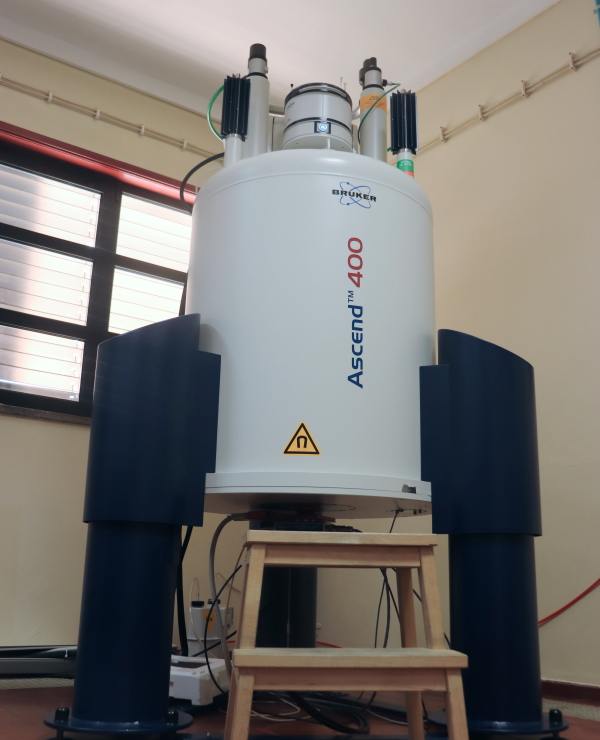Experimental details
The three spectrometers are designed for the analysis of samples in the liquid phase and are equipped with variable temperature units, ranging from -150ºC to 180°C;
The most common NMR analysis are 1D and 2D experiments in which the signals of the nuclei are analysed, depending on the used probe, and in the case of 2D experiments, it is also possible to look for the correlations between the different studied nuclei;
Samples for analysis must be delivered in the liquid phase, with adequate identification. The samples must be delivered in appropriate tubes (quartz), compatible with the frequency of the equipment (400 or 600 MHz) and with a diameter of 5 mm. The solutions should be prepared in deuterated solvents and must be completely soluble in the selected solvent. The ideal amount of sample is 5 - 10 mg for 1H analysis and above 20 mg for 13C analysis. However, it will depend on sensitivity, the isotopic abundance, the nuclei to analyse, the instrument sensitivity, the spectrometer frequency, and the kind of analysis required;
The minimum sample volume required is 600 µL, for a tube length of 140 mm. The resistance of the tube must be checked, always, before sample preparation, since it can break inside the instrument during analysis causing serious equipment damage;
Long experiments are usually performed overnight or during the weekend.




